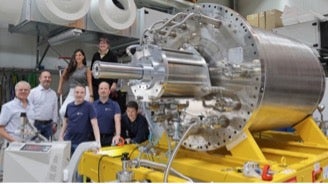
The first cryopump for the International Thermonuclear Experimental Reactor (ITER) under construction in France has passed all final factory acceptance tests at Research Instruments (RI) in Germany. ITER said this marked a major milestone in the procurement programme for these one-of-a-kind components that were developed through the close collaboration of experts at ITER, Fusion for Energy (F4E) and European industry.
“This achievement paves the way for delivery of the first cryopump to ITER by the end of the month and seven more by the end of the year,” noted Robert Pearce, ITER Vacuum System Project Leader. The ITER vacuum vessel and cryostat are among the largest vacuum systems ever built, with a volume of nearly 1,400 cubic metres and 8,500 cubic metres respectively.
Cryopumps “capture” unwanted particles by trapping them on extremely cold surfaces They are indispensable to finalizing the initial pumping done by mechanical devices to create the very specific vacuum conditions that ITER requires. ITER will rely on six torus cryopumps to maintain ultra-high vacuum inside the ITER vacuum vessel during operation and to create low density—about one million times lower than the density of air. Two other cryopumps will provide the insulating vacuum in the cryostat that allow the superconducting magnets to remain cold.
All eight are under the procurement responsibility of the European Domestic Agency F4E. Research and prototyping have been underway for years; since 2018 the build-to-print procurement package has been in the hands of industry after the delivery of a pre-production cryopump unit for testing and the signature of the Torus and Cryostat Cryopump Procurement Arrangement.






